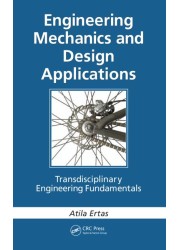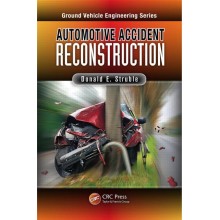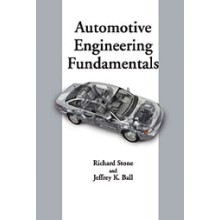Engineering Mechanics and Design Applications: Transdisciplinary Engineering Fundamentals
Our Price: £65.99
Discount : 10%
Quantity:
-
Add to Compare
In the last decade, the number of complex problems facing engineers has increased, and the technical knowledge required to address and mitigate them continues to evolve rapidly. These problems include not only the design of engineering systems with numerous components and subsystems, but also the design, redesign, and interaction of social, political, managerial, commercial, biological, medical, and other systems. These systems are likely to be dynamic and adaptive in nature. Finding creative solutions to such large-scale, unstructured problems requires activities that cut across traditional disciplinary boundaries.
Engineering Mechanics and Design Applications: Transdisciplinary Engineering Fundamentals presents basic engineering mechanics concepts in the context of the engineering design process. It provides non-mechanical engineers with the knowledge needed to understand the mechanical aspects of a project, making it easier to collaborate in transdisciplinary teams.
Combining statics, dynamics, vibrations, and strength of materials in one volume, the book offers a practical reference for engineering design. It begins with an overview of Prevention through Design (PtD), providing a broad understanding of occupational safety and health needs in the design process. It then presents condensed introductions to engineering statics, engineering dynamics, and solid mechanics as well as failure theories and dynamic loadings. Examples of real-life design analysis and applications demonstrate how transdisciplinary engineering knowledge can be applied in practice.
A concise introduction to mechanics and design, the book is suitable for nonengineering students who need to understand the fundamentals of engineering mechanics, as well as for engineering students preparing for the Fundamentals of Engineering exam. Professional engineers, researchers, and scientists in non-mechanical engineering disciplines, particularly those collaboratively working on large-scale engineering projects, will also find this a valuable resource.
Table of Contents
Prevention through Design: A Transdisciplinary Process
Introduction
Transdisciplinarity and PtD
Discipline
Defining Transdisciplinarity
Multidisciplinary, Interdisciplinary, and Transdisciplinary Case Studies
Why Prevention through Design Is a Transdisciplinary Process?
PtD Considerations for the Design Process
Prevention through Design
PtD Program Mission
PtD Process
Stakeholder Input
Strategic Goal Areas
The Business Value of PtD
Case Studies
Case Study 1
Case Study 2
Case Study 3
Case Study 4
PtD and Sustainability
Transdisciplinary Sustainable Development
Contaminated Environment
Making “Green Jobs” Safe: Integrating Occupational Safety and Health into Green Jobs and Sustainability
Going Green during Construction
Conclusion
References
Static
Introduction
Fundamental Concepts
Weight and Mass
Rigid Body
Force
Force as a Vector
Definition
Trigonometric Solution
Force Components in Space
Force Vector Defined by Its Magnitude and Two Points on Its Line of Action
Moments
Free-Body Diagram
Equilibrium of a Particle
Equilibrium of a Rigid Body
Equilibrium of a Two-Force Member
Equilibrium of a Three-Force Member
Equilibrium of a Pulley System
Moment of a Force About a Given Axis
Moment of a Couple
Structures in Three Dimensions
Trusses
Method of Joint
Method of Section
Machines and Frames
Friction
Coefficient of Friction
Angles of Static and Kinetic Friction
Properties of Plane Areas
Parallel Axis Theorem for Areas
Radius of Gyration of Area
Moment of Inertia of Composite Areas
Bibliography
Dynamics
Introduction
Kinematics of a Rigid Body
Translation
Fixed-Axis Rotation
General Plane Motion
Absolute and Relative Velocity in Plane Motion
Instantaneous Center of Zero Velocity (IC)
Absolute and Relative Acceleration in Plane Motion
Kinetics of a Rigid Body
Translation
Fixed-Axis Rotation
General Plane Motion
Rolling Problems
Planar Kinetic Energy and Work
Principle of Work and Energy
Conservation of Energy
Principle of Linear Impulse and Momentum
Principle of Angular Impulse and Momentum
Impact
Bibliography
Solid Mechanics
Introduction
Stress Analysis
Uniform Normal Stress and Strain
Uniform Shear Stress and Strain
Thermal Stress and Strain
Normal Bending Stress in Beams
Shear Stress in Beams
Stress in Thin-Walled Pressure Vessels
Combined Stress
Stress–Strain Analysis
Plane Stress
Stress on an Inclined Plane
Mohr’s Circle of Stress
Principal Stresses in Three Dimensions
Strain Measurement and Stress Calculations
Deflection and Stiffness of Beams
Spring Rates
Torsion
Lateral Deflections of Beams
Buckling of Columns
Eccentrically Loaded Column
Prestressed Concrete Column
References
Bibliography
Failure Theories and Dynamic Loadings
Failure Theories and Safety Factor
Maximum Normal Stress Theory
Maximum Shear Stress Theory
Distortion Energy Theory
Fatigue Failure
Fatigue Strength Correction Factors
Fluctuating Stresses
Fatigue Analysis for Brittle Materials
Fatigue Analysis for Ductile Materials
Cumulative Fatigue Damage
Design Analysis Using Fracture Mechanics
Stress State in a Crack (Mode I)
Elliptical Crack in an Infinite Plate
Critical Crack Length
Leak-before-Break
Fatigue Crack Propagation
Vibrations in Design
Knowledge of Vibrations and Design Engineers
Terminology in the Field of Vibration
Natural Frequency of Spring–Mass System
Dynamic Displacements and Stresses
Forced Vibration of a Single-Degree-of-Freedom Linear System
Response of a Single-Degree-of-Freedom System under Random Excitation
Number of Zero Crossing
References
Bibliography
Design Analysis and Applications
Introduction
Design Analysis and Application I
Pipeline System Design
Related Design Problem
Design Analysis and Application II
Offshore Drilling
Related Design Problem
References
Appendices
Index
Write a review
Your Name:Your Review: Note: HTML is not translated!
Rating: Bad Good
Enter the code in the box below:
Copyright © 2014 Engineering Standards Bureau. All Rights Reserved.
Developed By Zoom Into Web






